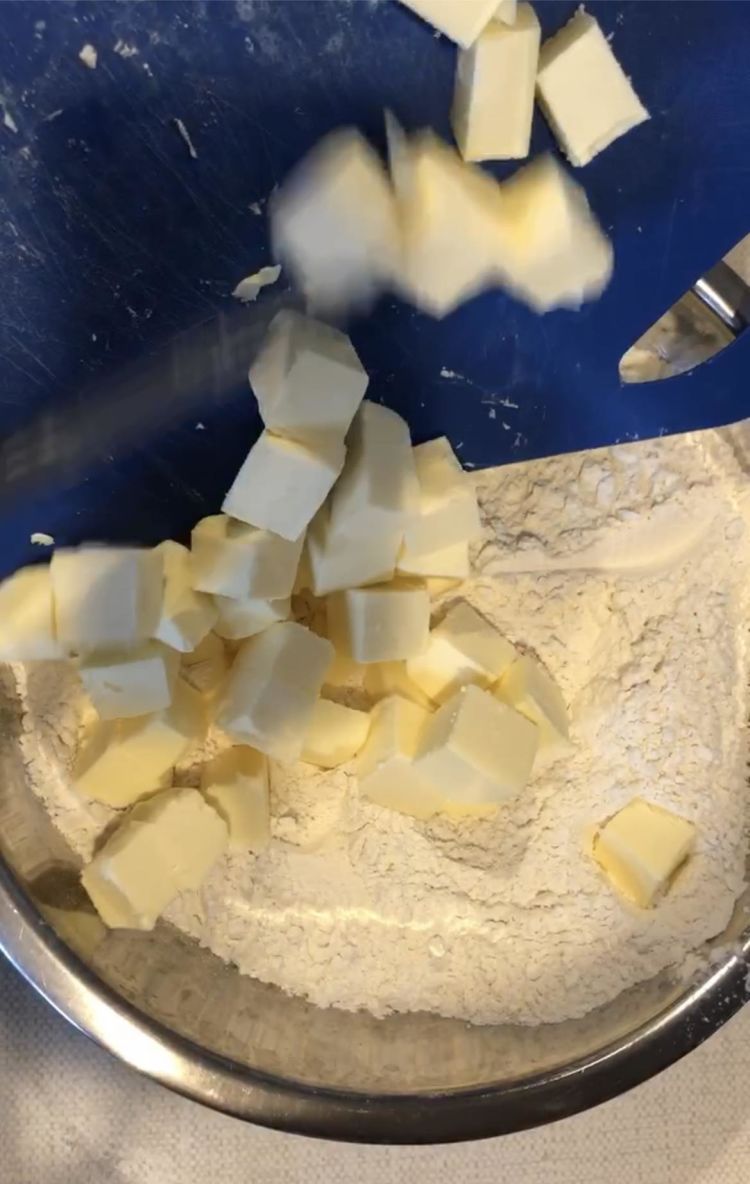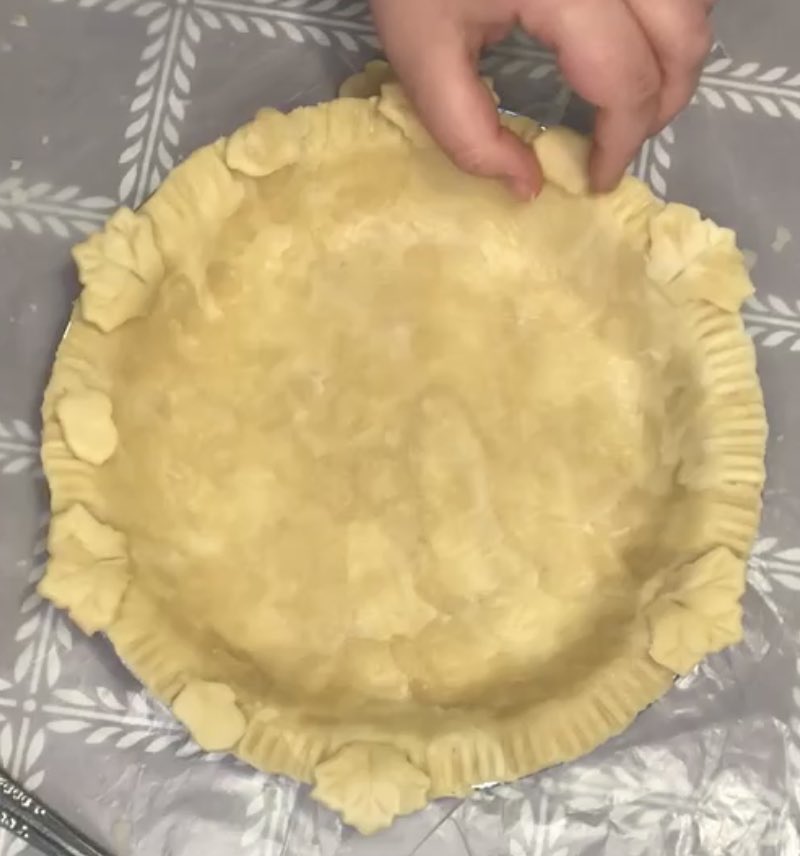 A good crust is the foundation of a delectable pie; no matter how good your filling is a poorly made crust will throw off the taste and texture, not to mention be frustrating to work with. Good food is good medicine, don’t that frustration enter the food you make; make things easier for yourself and accept that it doesn’t need to be perfect it just needs to taste good and make you happy.
A good crust is the foundation of a delectable pie; no matter how good your filling is a poorly made crust will throw off the taste and texture, not to mention be frustrating to work with. Good food is good medicine, don’t that frustration enter the food you make; make things easier for yourself and accept that it doesn’t need to be perfect it just needs to taste good and make you happy.
The main pie I make is pumpkin pie, and this crust tastes delicious and stays together when you cut and serve your pie, so much so I personally don’t bother with a plate, I add my whipped cream and just eat it like pizza.
You don’t need to take my word for it that it’s good, this crust is peer reviewed and well loved. About 6 years ago I tried entering my pumpkin pie in the Markham Fair and won 4th place; not bad for my first time and in one of the most popular baking categories at the GTA’s biggest fair. I’ve had years to improve on it since so imagine how good my pies are now.
When fall comes I like to share pies with friends, family, and even my professors to show my appreciation; in fact, I decided to share this recipe with you today because one of my professors asked me to share my crust recipe with her and I completely forgot until a weird amount of time had passed and then I felt too embarrassed to say anything. Perhaps my professor will come across this recipe one day and know that I had good intentions, but I am awkward and sometimes have poor working memory.
I finished that course just recently actually and have been reflecting on what I’ve learned and taken from it. I’m Mi’kmaq and have spent allot of time over the years trying to reconnect with and learn about my culture, but it’s an ongoing process sometimes made difficult by access to knowledge and resources, so when I saw a course called Indigenous Knowledge for Youth I took it out of interest hoping maybe I’d learn a few teachings along the way if it was done well. I am happy to report that I did learn a few things along the way, as well as used some of the well worded lessons to get my group a good mark in one of my other courses.
One of the more impactful moments in this course was when we had our guest speaker Zhaawnong Webb in week 11. Amongst the various things he talked about he shared a few teachings on hair; now I knew some of the general teachings around hair such as it's associations with strength, but I didn't have any specific teachings about how to care for one's hair. Within the last year I've been having some unidentified health issues with one of the symptoms being that my hair has begun to fall out at a faster than average rate. Now as much as I know that my hair isn't attached to my value it's difficult to not be self-conscious about it, especially with hair having such a significant role in indigenous culture. This past summer I attended a summer theatre program with the Centre for Indigenous Theatre and I had already begun to have some problems with my hair; it had gotten to the point where I couldn't put my hair into braids without them just going completely frizzy because of how many different lengths various parts of my hair were, and some of it was now too short to even go into the braids. On the day of our final performance I really wanted to wear my braids: I spent over an hour in the washroom and a ton of Hairspray trying to get my hair into my braids without it looking frizzy or pieces falling out and at one point I remember just being on the floor crying because it felt like nothing was working. I told no one about that meltdown because I was too embarrassed about it and we were about to do a show and I didn’t want them to think I had performance anxiety because that is the only anxiety I don’t have (I like to call it reverse stage fright). Anyways, at some point while Zhaawnong was talking about hair he mentioned that when your hair falls out his teaching was that you’re not supposed to just throw it in the garbage you’re supposed to return it to the earth. Since that lecture I’ve been a more mindful about what I’m doing with my hair and have been careful not to throw it out. I wasn’t sure if there was anything specific I was supposed to do when I returned my hair to the earth so I just kind of guessed and came up with my own thing, but the important thing is the intention behind it so I know that this is fine for now. I put it by a tree with some tobacco and said a little prayer for health and strength. I don’t know if it will really do much, but it at least felt good to have something to try since I haven’t even been able to figure out what’s causing this let alone find a solution, so I’ve felt rather helpless in regard to it.
Now you’re probably thinking “but how did this get you a good mark in your other course?” well I’ll tell you. Our final project in Literature and Environment was that in groups we were to read a novel and then present it to the class using the concepts and things we learned throughout the semester and then lead a discussion on it. My group had a book called Ceremony by Leslie Marmon Silko about a WWII Veteran from the Laguna Pueblo reservation in New Mexico who is struggling with PTSD and has returned to find his home is suffering from a drought that he thinks is his fault. Now this is a good book, but despite the fact reading was half my personality in middle school my brain decided a few years ago that reading books is now something we’re incapable of so I did not actually read this book. I read the sparknotes and flipped through for key content at the last minute before meeting with my group to work on the presentation. I got there to find out the one person had read only ¼ of the book so far and the other had read it two years ago and was going off what he remembered so we were off to a great start. One thing I did know was there was a story being told in pieces throughout the text so playing to my strengths I suggested I could start by telling the story before we even started talking about the text since it played such an important role, and it would make our presentation sort of mirror the text in a way. It worked just as I’d hoped and the professor loved it; he sent us the notes about key points that he took as we presented and first note was just “Open with the story from the start. Sam's reading is amazing.” Perfect, but telling a story isn’t actually textual analysis, for that I took straight from my other course. My key analysis was between the main character and the antagonist: a western lens would have the tendency to separate them into good and bad or right and wrong, but I proposed that it was actually a difference between Western and Indigenous ways of healing. Western ways of healing are very individualistic, it’s your problem and your responsibility to fix it and not burden those around you. Indigenous ways of knowing and being see us all as connected and therefore healing is a community effort. In this book the antagonist has been caught up in the Western idea of healing and becomes very isolated turning to substances and becoming violent with no support network; in contrast the main character is working not only on healing himself but healing the community and the land from the drought, and he turns to elders to help him create this new ceremony that will do that. It’s not that I didn’t know the importance of community and interconnectedness to indigenous peoples, but had I not been taking my indigenous studies course I don’t know that I could have articulated that as well and it’s specific relevance to healing.
Now as engrossed in my tales of indigenous studies as you are you came here for a pie crust recipe and we should get back to that. This recipe uses all butter because that’s my personal preference, it tastes good, holds together well, is the easiest to shape and transfer (especially important for pies with top crusts). You can substitute some or all of the butter with lard or vegetable shortening if you so choose; I find they make a crumbly rather than flaky crust, but my mother prefers the way it almost melts in your mouth like a sugar cookie. I am a strong proponent of whatever uses the least dishes so this recipe is done by hand in one bowl, but you can use a pastry cutter to cut the butter into the flour or some recipes even use a blender. Also when it comes to the ice water I just tend to stick a glass of water surrounded by a damp paper towel in the freezer for like 20 minutes because I never remember to make ice cubes ahead of time and it just needs to be cold.
Enjoy your delicious pie crust, hopefully it’s used for an equally delicious pie <3
Ingredients
- 2 1/2 cups All Purpose Flour
- 1 cup of cold Butter
- 1 tsp Salt
- 2 Tbsp of Sugar
- 4-10 Tbsp of Ice Cold Water
Directions
- 1mix your dry ingredients into a bowl, a wider bowl will be easier to work with
- 2cube your cold butter and add it to the dry ingredients.
- 3coat the butter in flour mixture and then begin to crumble your butter with your hands ensuring each newly exposed butter surface gets coated. eventually it will all look crumbly.
- 4drizzle your ice water over the crumble a tablespoon at a time lightly mixing it through the dough until it just barely holds together. Do not knead the dough as it will make it dense and not flaky.
- 5divide dough in half and form into balls or disks then wrap and put into fridge to rest for at least an hour before using.
- 6when using bake based on your pie recipes instruction
